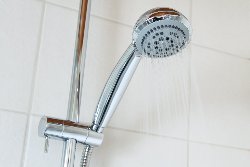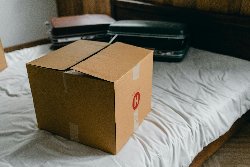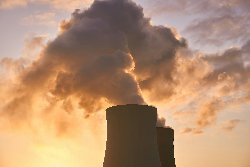Auckland Museum cuts carbon emissions by 31% in two years
Auckland Museum cuts carbon emissions by 31% in two years
Auckland War Memorial Museum has achieved a milestone in its sustainability efforts by cutting its carbon footprint during 2012 by 21% – taking its reduction over the past two years to 31%.
This result means the museum expects to spend 35% less on electricity and gas in 2013 compared to what was spent in its benchmark year of 2010 (adjusted for inflation). This equates to a saving of $340,000 this year.
A 365 tonne reduction of carbon emissions was achieved during 2012, bringing the total Co2 reduction over the past two calendar years to 600 tonnes.
Auckland Mayor Len Brown has welcomed the museum’s latest environmental results, saying: “Cutting carbon emissions is an important environmental goal on the path towards making Auckland the world's most liveable city. I appreciate the leadership role being taken by Auckland Museum and hope that lead will inspire other organisations in Auckland.”
The results are independently certified by CEMARS® (Certified Emissions Measurement And Reduction Scheme), run by carboNZeroCertTM Holdings, a wholly owned subsidiary of Landcare Research. CEMARS certification confirms measurement of greenhouse gas emissions in compliance with ISO14064-1, the international standard for quantifying and reporting an organisation’s carbon footprint. It also certifies that plans are in place to reduce emissions.
In 2011 Auckland Museum became the first museum in the world to gain CEMARS certification.
The 21% reduction in the museum’s carbon emissions for 2012 was largely achieved through improvements in air conditioning control strategies and systems, which cut consumption of natural gas and electricity. Other contributors were increased recycling by the public and staff, improved power-saving by staff and more use of energy efficient LED lighting.
The 31% reduction in overall carbon emissions for the past two years (2011 and 2012) comprises natural gas consumption reductions of 49%, electricity consumption reductions of 17% and air travel and waste carbon emission reductions of 22%.
“The planet’s resources are finite. We regard reducing the museum’s carbon footprint as an essential contribution to the global green agenda for change. Our environmental strategy strongly reflects Kaitiakitanga – one of three guiding principles at the core of the museum’s strategy for the future. It also better equips us to provide excellent value for money and pay for new, innovative programmes that better serve our diverse audiences,” Auckland Museum Director Roy Clare said.
“Aucklanders and the tourists who visit the museum increasingly expect us to make continual improvements to our environmental performance. Our goal is to lead the way, set the standard for others and contribute to the success of Auckland Council’s environmental and tourism strategies.”
The museum aims to cut emissions in the coming year by a further 5.7%, by sending less waste to landfill, reducing travel and achieving more gas and electricity savings. Alternative energy sources will also be investigated.
Mr Clare said the museum has to provide carefully controlled temperature and humidity levels to preserve its world-acclaimed collection of 3.5 million artefacts. Over the past two years staff had innovated by researching and fitting advanced monitoring systems to better regulate air conditioning.
This enhanced information provided the necessary assurance that consistent and suitable conditions were being maintained when systems were turned off for longer periods, especially overnight. The revised approach had the full backing of research and collection staff responsible for the care of precious taonga.
Martin Mariassouce, chair of the museum’s legislated Maori advisory committee (the Taumata-a-Iwi) welcomed the latest milestone, saying: “Environmental guardianship is critically important. The Taumata-a-Iwi is extremely pleased the museum continues to demonstrate excellent commitment to Kaitiakitanga and real respect for the resources of our planet.”
Since 2010 the museum has produced efficiencies by changing its emissions mix. In 2010, electricity was responsible for 45% of emissions, natural gas 42% and travel & waste 13%. In 2012 electricity was raised to 55% of emissions, gas reduced to 31% and travel & waste roughly the same at 14%. Natural gas is consumed to produce high temperatures for the museum’s air conditioning and ventilation systems, with electricity used to produce low temperatures, lighting and for general purposes.
Using 2010 as a base year, had the museum not implemented its initiatives, its 2013 electricity bill was predicated to be $798,000. Instead the museum expects to spend about $559,000 this year on electricity (a saving of $239,000). Similarly, natural gas expenditure in 2013 without the changes was predicted to be $182,000 but is now estimated at $81,000 (a saving of $101,000). Total energy savings from base year 2010 for gas and electricity amount to an expected $340,000 in 2013 – a 35% cut over three years.
Dr Ann
Smith, CEO carboNZero Holdings, also commented: “Auckland
Museum has done some extraordinary work to reduce its
greenhouse emissions and the museum team deserves to be
really proud of their achievements. It is inspiring to see a
major public institution taking responsibility for the
challenge of reducing its climate change
impacts.”
ends


 Sharesies: Expanding B2B Offering With First Acquisition
Sharesies: Expanding B2B Offering With First Acquisition  Contact Energy: Empowering Kiwis To Make Positive Changes To Their Energy Habits
Contact Energy: Empowering Kiwis To Make Positive Changes To Their Energy Habits Google Cloud: A Deep Dive Into The Future Of Cybersecurity
Google Cloud: A Deep Dive Into The Future Of Cybersecurity Port of Auckland: Grant A Welcome Boost For Spirit Of Adventure Programme
Port of Auckland: Grant A Welcome Boost For Spirit Of Adventure Programme Auckland Property Investors Association: Welcomes Pending Tenancy Law Changes With Caution
Auckland Property Investors Association: Welcomes Pending Tenancy Law Changes With Caution Statistics New Zealand: Total Greenhouse Gas Emissions Decrease 0.5 Percent In The December 2023 Quarter
Statistics New Zealand: Total Greenhouse Gas Emissions Decrease 0.5 Percent In The December 2023 Quarter



